- Benefits of Siderates
- Choosing the Right Siderate
- Growth Habit
- Nutrient Cycling
- Disease and Pest Management
- Climate and Season
- Cover Crop Mixtures
- Availability and Cost
- Best Time to Plant Siderates
- Considerations for Timing
- Recommended Planting Times
- Preparing the Soil for Siderates
- 1. Clear the area
- 2. Test the soil
- 3. Amend the soil
- 4. Choose the right siderate species
- 5. Plant the siderates
- 6. Incorporate the siderates into the soil
- 7. Repeat the process
- Planting Siderates
- Benefits of Planting Siderates
- Choosing and Planting Siderates
- Incorporating Siderates into the Soil
- Incorporating Siderates into Soil
- 1. Mowing and Tilling
- 2. Roller-Crimping
- 3. Grazing
- 4. Green Manure
- Effects of Siderates on Soil Health
- 1. Soil Structure
- 2. Nutrient Cycling
- 3. Weed Suppression
- 4. Erosion Control
- 5. Biodiversity and Beneficial Organisms
- Siderates and Crop Rotation
- Benefits of Siderates in Crop Rotation
- Choosing and Incorporating Siderates
- Conclusion
- “Question-Answer”
- What are siderates and why are they important?
- When is the right time to plant siderates?
- Which siderates are suitable for different soil types?
- How can siderates improve soil fertility?
- What precautions should be taken when incorporating siderates into the soil?
- Can siderates help in weed control?
- Are there any risks or disadvantages associated with planting siderates?
- “Video” Cover Cropping: The LAZIEST Way to Improve Your Soil
Siderates, also known as cover crops, are plants that are grown specifically to improve the health and fertility of the soil. They are typically planted between cash crops or during fallow periods to prevent erosion, suppress weeds, and add organic matter to the soil. However, it is crucial to plant and incorporate siderates at the right time to maximize their benefits.
One of the key factors to consider when planting siderates is the timing. Siderates should be planted at a time when they have enough time to establish and grow before the next cash crop is planted. This typically means planting them several weeks before the end of the growing season. By giving the siderates enough time to establish, they will be able to develop a strong root system and accumulate nutrients from the soil.
Incorporating siderates into the soil at the right time is equally important. Siderates should be tilled or mowed down when they have reached their peak biomass. This is usually when they are in full flower or just before they start to set seed. Tilling or mowing down the siderates at this stage allows them to decompose quickly and release their nutrients back into the soil.
Overall, planting and incorporating siderates into the soil at the right time is essential for reaping their maximum benefits. By carefully timing their planting and incorporation, farmers can enhance soil health, reduce erosion, suppress weeds, and improve overall crop productivity.
Benefits of Siderates
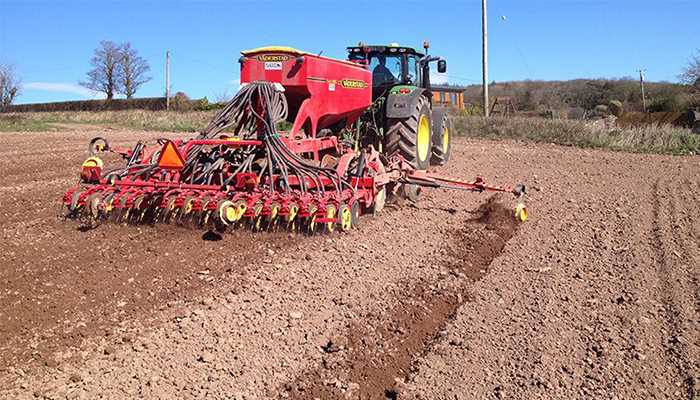
Siderates, also known as cover crops or green manure crops, offer numerous benefits when incorporated into the soil at the right time. These benefits include:
- Soil erosion prevention: Siderates help to protect the soil from erosion caused by wind and water. Their dense root systems bind the soil particles together, reducing the risk of erosion and keeping valuable topsoil in place.
- Nutrient retention: Siderates have the ability to absorb excess nutrients from the soil, such as nitrogen and phosphorus, preventing them from leaching into waterways and causing pollution. When the cover crops are later incorporated into the soil, these nutrients are released and made available to the following crops.
- Improved soil structure: Siderates enhance soil structure by adding organic matter to the soil. As the cover crops decompose, they increase the soil’s ability to hold water, improve its drainage, and create a crumbly and friable soil texture.
- Weed suppression: Siderates compete with weeds for nutrients, light, and space, effectively suppressing weed growth. This reduces the need for herbicides and manual weed control, resulting in cost savings and a more sustainable farming system.
- Increased biodiversity: Siderates provide habitat and food for beneficial insects, birds, and microorganisms. This promotes a diverse and healthy ecosystem within the soil, which can help control pests naturally and enhance overall crop productivity.
- Reduced soil compaction: Some siderates, like legumes, have deep taproots that penetrate compacted soils, breaking up hardpans and improving soil aeration. This allows for better water infiltration and root penetration, leading to healthier plant growth.
- Climate change mitigation: Siderates help to sequester carbon from the atmosphere and store it in the soil, effectively reducing greenhouse gas emissions. This has a positive impact on climate change mitigation and can contribute to sustainable farming practices.
In conclusion, incorporating siderates into the soil at the right time offers a multitude of benefits for farmers and the environment. From preventing soil erosion and retaining nutrients to improving soil structure and suppressing weeds, cover crops play a vital role in sustainable agriculture.
Choosing the Right Siderate
When choosing a siderate to plant and incorporate into the soil, it is important to consider several factors. The right choice will depend on your specific goals and the conditions of your garden or farm. Here are some points to consider:
Growth Habit
Consider the growth habit of the siderate. Some plants, such as legumes, have deep taproots that can help break up compacted soil and improve drainage. Others, like grasses or brassicas, have fibrous root systems that help prevent erosion and build organic matter.
Nutrient Cycling
Each siderate species has a unique ability to accumulate and cycle nutrients. Legumes, for example, can fix atmospheric nitrogen and make it available to other plants. Other siderates can scavenge nutrients from the soil and hold them in their biomass, preventing them from leaching out.
Disease and Pest Management
Siderates can also help manage diseases and pests in your garden or farm. Some plants produce natural compounds that suppress certain pathogens or attract beneficial insects. Consider incorporating siderates that are known to have these beneficial effects.
Climate and Season
Choose siderates that are adapted to your climate and growing season. Some plants thrive in cooler temperatures, while others prefer warm or hot weather. Additionally, consider the length of time it takes for a siderate to reach maturity and be ready for incorporation into the soil.
Cover Crop Mixtures
Consider planting a mixture of siderates rather than just one species. Different plants have different strengths and can complement each other’s characteristics. A diverse mixture can provide additional benefits, such as increased biodiversity, improved soil structure, and extended flowering periods for pollinators.
Availability and Cost
Finally, consider the availability and cost of the siderate seeds or seedlings. Some siderates may be more readily available and affordable than others. It’s important to choose varieties that fit within your budget and are easily obtainable.
By considering these factors, you can choose the right siderate for your specific needs and maximize the benefits they provide to your soil and overall farm or garden ecosystem.
Best Time to Plant Siderates
Siderates, also known as cover crops, play a crucial role in improving soil health and fertility. They are planted primarily to protect the soil from erosion, suppress weeds, and add organic matter. However, to maximize the benefits of siderates, it is essential to plant them at the right time.
Considerations for Timing
- Climate: The timing of planting siderates largely depends on the local climate. Different siderate species have different temperature and moisture requirements, so it’s crucial to choose appropriate species based on the climate of your region.
- Growth Period: Siderates have different growth periods, ranging from a few weeks to several months. Consider the length of the growing season in your area and choose a siderate that can mature before the first frost or before you need the soil for planting your main crop.
- Soil Preparation: Before planting siderates, it is essential to prepare the soil properly. This includes removing weeds, loosening the soil, and providing any necessary amendments. Make sure to complete these tasks well in advance to ensure the soil is ready for planting.
Recommended Planting Times
The best time to plant siderates may vary depending on your specific region, but here are some general guidelines:
| Siderate | Best Planting Time |
|---|---|
| Winter Rye | Fall or early spring |
| Crimson Clover | Fall or early spring |
| Hairy Vetch | Fall or early spring |
| Buckwheat | Spring or summer |
| Field Peas | Spring or fall |
These planting times are just general recommendations and may need to be adjusted based on your specific climate and growing conditions. It is always best to consult with local agricultural extension services or experienced farmers in your area for the most accurate planting advice.
By planting siderates at the right time, you can optimize their growth and benefits, leading to healthier and more productive soil for your future crops.
Preparing the Soil for Siderates
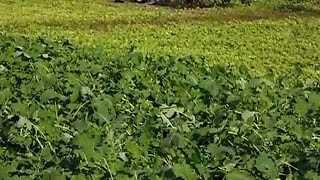
Before planting siderates in your garden, it is important to properly prepare the soil. This will ensure that the siderates grow well and provide maximum benefits to your garden. Here are some steps to prepare the soil for siderates:
1. Clear the area
Start by clearing the designated area of any weeds, rocks, or other debris that may hinder the growth of siderates. This will create a clean and optimal environment for the siderates to thrive.
2. Test the soil
It is essential to test the soil before planting siderates. A soil test will provide you with important information about the pH levels, nutrient content, and organic matter present in the soil. This will help you determine which siderate species will be most suitable for your soil.
3. Amend the soil
Based on the results of the soil test, you may need to amend the soil to create optimal conditions for siderates. This may involve adding organic matter, such as compost or well-rotted manure, to improve soil structure and fertility.
4. Choose the right siderate species
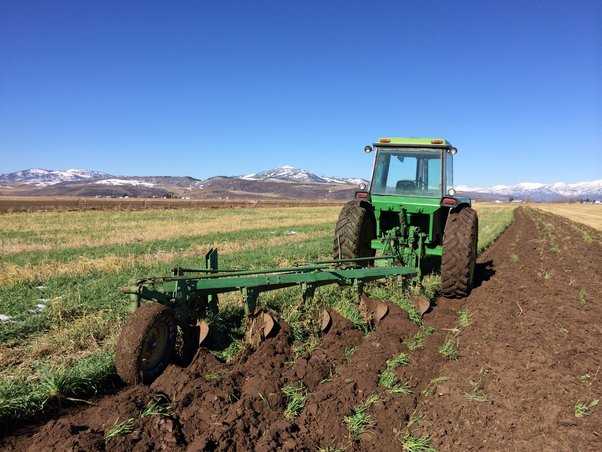
Once you have prepared the soil, it is important to choose the right siderate species for your garden. Consider factors such as climate, soil type, and intended purpose (e.g., nitrogen fixation, weed suppression) when selecting siderates for your garden.
5. Plant the siderates
Follow the recommended planting instructions for the chosen siderate species. This will typically involve sowing the seeds directly into the prepared soil at the appropriate depth and spacing. Be sure to water the seeds thoroughly after planting to ensure proper germination.
6. Incorporate the siderates into the soil
After the siderates have grown for the recommended period, it is time to incorporate them into the soil. Depending on the species, this may involve mowing or tilling the plants into the soil. The decomposing siderates will add organic matter and nutrients, improving the soil’s fertility and structure.
7. Repeat the process
Siderates are typically planted on a rotational basis, meaning you will need to repeat the process in different areas of your garden each year or growing season. This helps to maintain soil health, prevent nutrient depletion, and control weeds.
By properly preparing the soil for siderates, you can ensure their successful growth and reap the many benefits they provide to your garden.
Planting Siderates
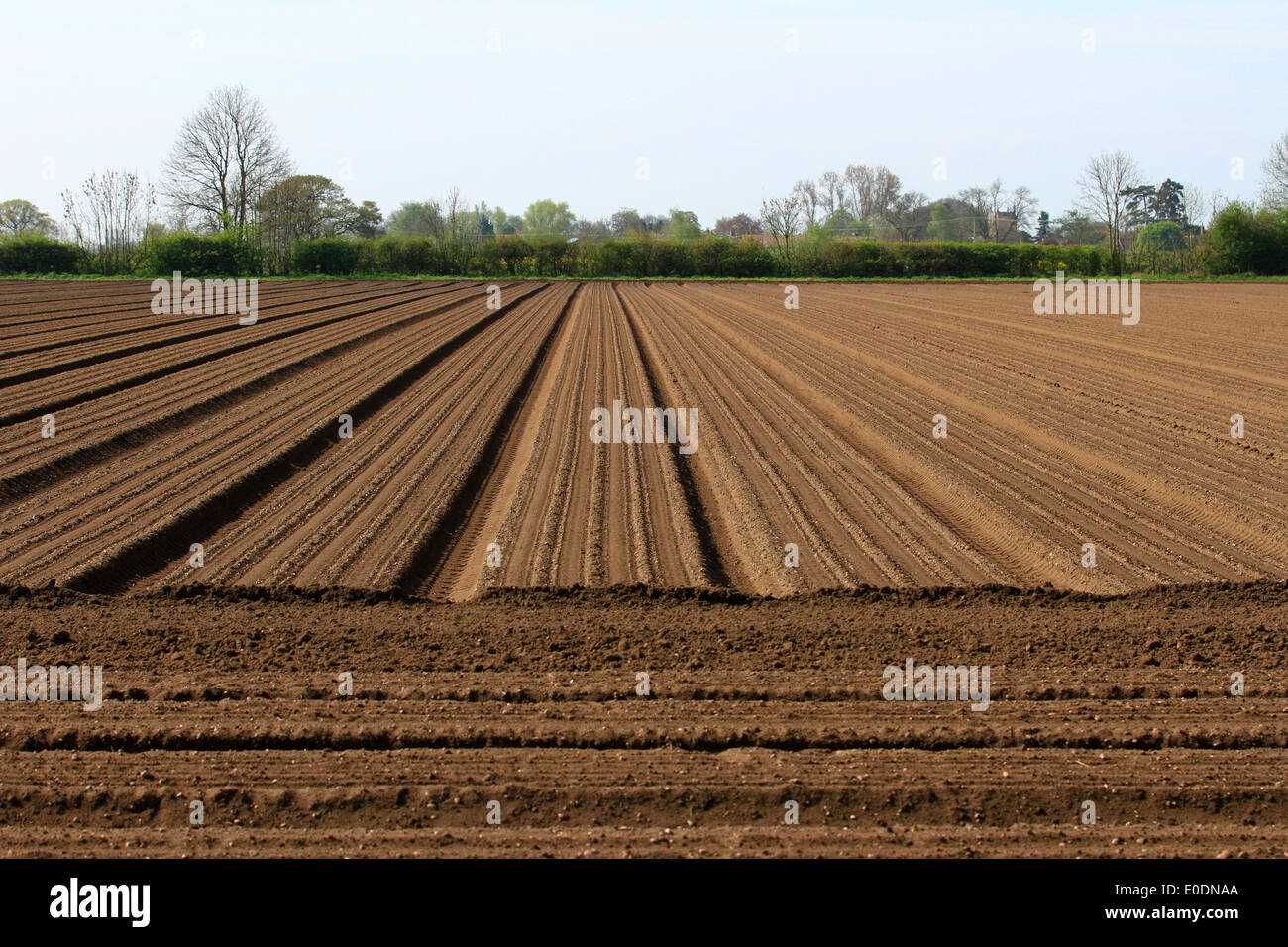
Planting siderates is an important practice in agriculture that involves growing cover crops specifically for the purpose of improving soil health and fertility. These crops are typically sown in between main cash crops and are then incorporated into the soil before they reach maturity. The planting of siderates provides numerous benefits to the soil and can be a key component of sustainable farming practices.
Benefits of Planting Siderates
- Soil erosion prevention: Siderates help protect the soil from erosion by forming a dense cover over the surface, reducing water runoff and preventing wind erosion.
- Soil structure improvement: The roots of siderates penetrate the soil, improving its structure and promoting better water infiltration and drainage.
- Soil fertility enhancement: Siderates have the ability to fix atmospheric nitrogen through a process known as nitrogen fixation. This increases the availability of nitrogen in the soil, benefiting subsequent crops.
- Nutrient retention: Siderates absorb and store nutrients from the soil, preventing them from leaching away and making them available for future crops.
- Weed suppression: The dense growth of siderates competes with weeds, reducing weed growth and the need for herbicides.
Choosing and Planting Siderates
When selecting siderates, it is important to consider the specific goals for soil improvement and the climate and conditions of the farm. Some common types of siderates include clover, vetch, rye, and buckwheat. These can be planted in a variety of ways, such as broadcasting the seeds over the field or using seed drills.
It is crucial to plant siderates at the right time to maximize their benefits. Ideally, they should be sown immediately after the harvest of the main cash crop to ensure sufficient time for growth before the onset of winter or dry periods. Sowing rates and depths may vary depending on the specific crop and soil conditions.
Incorporating Siderates into the Soil
Before reaching maturity, siderates need to be incorporated into the soil to release their nutrients and improve soil organic matter. This can be done through various methods, including plowing, disking, or mowing and tilling the cover crop residues into the soil.
It is important to consider the timing of incorporation, as well as the specific requirements of the cover crop, to ensure effective breakdown and nutrient release. Incorporating siderates before they produce seeds is recommended to prevent reseeding and potential weed problems.
In conclusion, planting siderates is a valuable practice for improving soil health and fertility. By selecting the appropriate cover crops and incorporating them into the soil at the right time, farmers can enhance soil structure, prevent erosion, increase nutrient availability, and reduce weed growth, ultimately leading to more sustainable and productive agricultural systems.
Incorporating Siderates into Soil
Once siderates have grown to the desired height and are ready to be incorporated into the soil, there are several methods that can be used to effectively incorporate them.
1. Mowing and Tilling

One common method is mowing the siderates to a height of 8-10 inches and then using a tiller or plow to incorporate them into the soil. This method works well for small to medium-sized gardens and can be easily accomplished with a rototiller or garden tractor.
2. Roller-Crimping
Roller-crimping is another popular method for incorporating siderates into soil. This method involves using a weighted roller with sharp blades to crimp and kill the siderates. The crimped plants then act as a natural mulch to suppress weeds and improve soil moisture retention.
3. Grazing
For larger agricultural fields, grazing animals such as cows or sheep can be used to incorporate siderates into the soil. The animals graze on the siderates, trampling them into the ground and naturally fertilizing the soil with their manure.
4. Green Manure
Another option is to let the siderates grow until they reach maturity and then plow them into the soil as a green manure. This method provides the added benefit of adding organic matter to the soil, improving soil structure, and increasing nutrient availability.
Regardless of the method chosen, it is important to wait until the siderates have reached the appropriate stage of growth before incorporating them into the soil. This ensures that they have had enough time to establish a healthy root system and maximize their nitrogen-fixing potential.
Effects of Siderates on Soil Health
Siderates, also known as cover crops, play a crucial role in improving soil health and fertility. When properly integrated into crop rotations, siderates can bring several benefits to the soil ecosystem.
1. Soil Structure
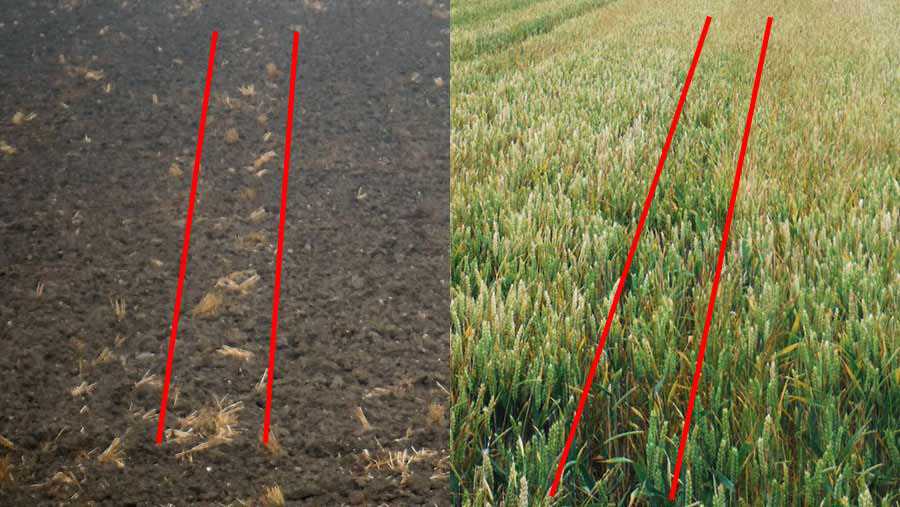
Siderates help improve soil structure by enhancing aggregation and reducing compaction. The extensive root systems of siderates break up compacted soil, allowing better water infiltration and air exchange. This leads to improved drainage and prevents waterlogging, which is essential for healthy plant growth.
2. Nutrient Cycling
Siderates have the ability to capture, store, and recycle nutrients that might otherwise be lost from the soil. They take up excess nitrogen, phosphorus, and other nutrients, preventing leaching and runoff into water bodies. When the siderates are incorporated into the soil, these nutrients are released and made available to future crops, reducing the need for synthetic fertilizers.
3. Weed Suppression
Siderates can help suppress weed growth by shading the soil surface and competing for resources. The dense growth of siderates shades out weed seedlings, preventing their establishment and reducing weed pressure in the following crop. This reduces the reliance on herbicides for weed control and promotes a more sustainable farming system.
4. Erosion Control
The extensive root systems of siderates bind the soil particles together, providing protection against erosion. They act as living mulch, covering the soil surface and reducing the impact of raindrops. Siderates also improve water infiltration, reducing surface runoff that carries away topsoil and nutrients. This helps preserve the integrity of the soil and reduces the overall loss of valuable agricultural land.
5. Biodiversity and Beneficial Organisms
Siderates provide habitat and food sources for beneficial organisms, such as earthworms, beneficial insects, and soil microorganisms. These organisms contribute to the overall health of the soil ecosystem by improving soil structure, nutrient cycling, and pest control. By fostering biodiversity, siderates create a more resilient and sustainable agricultural system.
Overall, incorporating siderates into a crop rotation can have numerous positive effects on soil health. It improves soil structure, enhances nutrient cycling, suppresses weeds, controls erosion, and promotes biodiversity. By implementing sustainable farming practices like siderate incorporation, farmers can maintain and enhance soil health, leading to improved crop productivity and long-term environmental sustainability.
Siderates and Crop Rotation
Crop rotation is an essential practice in sustainable agriculture, and incorporating siderates into the rotation can provide numerous benefits. Siderates, also known as cover crops or green manures, are grown specifically to improve soil health and fertility. They are planted between cash crop cycles and serve multiple purposes, such as weed suppression, erosion control, nutrient retention, and nitrogen fixation.
Benefits of Siderates in Crop Rotation
When siderates are included in crop rotation, they offer several advantages:
- Improved Soil Structure: Siderates have deep root systems that help break up compacted soil, improve water infiltration, and enhance soil aeration.
- Nutrient Cycling: Siderates take up excess nutrients from the soil, preventing nutrient leaching and making them available for the next cash crop.
- Weed Suppression: Siderates compete with weeds for water, light, and nutrients, reducing weed growth and the need for herbicides.
- Erosion Control: The dense foliage of siderates protects the soil from wind and water erosion, preventing nutrient loss and preserving topsoil.
- Nitrogen Fixation: Certain siderate species, such as legumes, have the ability to fix atmospheric nitrogen into a form that can be used by plants, reducing the reliance on synthetic fertilizers.
- Biodiversity: Including different types of siderates in crop rotation increases plant diversity, which in turn supports beneficial insects, improves pollination, and enhances overall ecosystem health.
Choosing and Incorporating Siderates
The selection of appropriate siderate species depends on various factors, including the specific soil conditions, climate, and intended benefits. Some commonly used siderates include clover, rye, vetch, buckwheat, and winter peas.
Before incorporating siderates into the soil, it is important to properly manage existing crop residues and weeds. This can be done through mowing, tilling, or using a combination of mechanical and chemical methods.
The timing of siderate planting is crucial to maximize their benefits. Siderates are usually sown after the cash crop harvest, allowing them time to establish and grow before winter. In some cases, siderates can also be interseeded with the cash crop.
Once the siderates have reached their desired growth stage, they can be terminated by mowing, rolling, or incorporating them into the soil. It is crucial to take into account the specific growth habit and stage of each siderate species to ensure proper termination and minimize potential issues such as regrowth or nutrient tie-up.
Conclusion
Integrating siderates into crop rotation can have significant benefits for soil health, nutrient management, weed control, and overall ecosystem resilience. By carefully selecting and incorporating siderates into the rotation, farmers can improve the long-term sustainability and productivity of their agricultural systems.
“Question-Answer”
What are siderates and why are they important?
Siderates are cover crops that are grown to improve soil quality, prevent erosion, and suppress weeds. They are important because they provide numerous benefits to the soil and help in sustainable farming practices.
When is the right time to plant siderates?
The right time to plant siderates depends on the specific crop and climate conditions, but generally, early spring or late fall is the best time to plant them. This allows them to establish and grow before or after the main crop.
Which siderates are suitable for different soil types?
There are various siderates suitable for different soil types. For clay soils, clover and legume-based siderates are ideal as they help in breaking up the soil. For sandy soils, grasses like rye or oats can help in enhancing soil structure and preventing erosion.
How can siderates improve soil fertility?
Siderates improve soil fertility by fixing nitrogen from the air and making it available to plants. Legume-based siderates, such as peas or vetch, have bacteria in their root nodules that convert atmospheric nitrogen into a form that plants can use, thus enriching the soil.
What precautions should be taken when incorporating siderates into the soil?
When incorporating siderates into the soil, it is important to ensure that they are properly decomposed to prevent nitrogen tie-up. This can be done by mowing or tilling the cover crops before they reach full maturity. It is also recommended to wait for a few weeks before planting the main crop to allow the siderates to break down.
Can siderates help in weed control?
Yes, siderates can help in weed control. They have the ability to suppress weeds by shading the soil and inhibiting weed seed germination. Additionally, some siderates release chemicals that act as natural herbicides, further controlling weed growth.
Are there any risks or disadvantages associated with planting siderates?
While siderates offer numerous benefits, there can be some risks or disadvantages associated with them. For example, if not properly managed, siderates can become weeds themselves and compete with the main crop for resources. Additionally, in certain climates, siderates can become a habitat for pests or diseases. Proper selection and management are crucial to avoid these potential issues.







